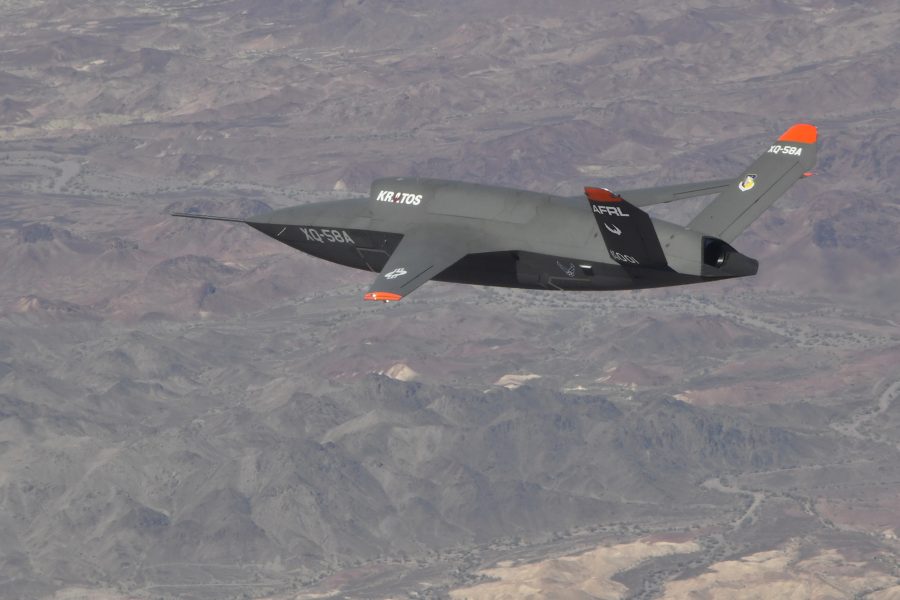The XQ-58A Valkyrie drone finished its fourth flight test in Arizona on Jan. 23, coming back from a mishap that occurred during its previous test in the fall.
Valkyrie, an Air Force Research Laboratory program with manufacturer Kratos Defense, is being designed as a possible munitions-carrying wingman for other military aircraft. The unmanned aircraft is cheaper and easier to produce than other drones, so the Air Force could use them in situations where it might not want to risk losing more advanced systems.
During the latest test, researchers collected more data on how the system reacts to changes in temperature and vibration—two key aspects of flight performance.
“We’re very pleased with the outcome of this fourth flight test,” Michael Wipperman, AFRL’s Valkyrie program manager, said. “We were able to show recovery for a successful flight at even higher altitudes. Given that we have overcome these challenges, we have confidence that the aircraft can continue its progression into flying in more representative conditions.”
In October, the experimental aircraft encountered a problem stemming from “high surface winds and a malfunction of the vehicle’s provisional flight test recovery system” after landing, according to a service release.
AFRL said the program implemented the recommendations made in the incident safety investigation ahead of this month’s test. Valkyrie will move on to its fifth and last flight later this year. That test will consider the aircraft through a more operational lens and plans to evaluate how well the systems work, its aerodynamic performance, and launch and recovery.
Air Force acquisition boss Will Roper said Jan. 21 Valkyrie could fly in the service’s upcoming joint all-domain command-and-control demonstration in April, equipped with a communications gateway that lets different fighter jets share data.
